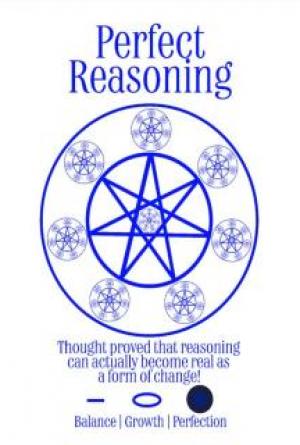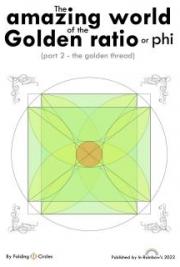Volume to be maximized:
V (x, y) = x2 y
Area of the box:
A(x, y) = x2 + 4xy
Constraint:
g( ,
x y)
2
= x + 4xy −108 = 0
108 x2
−
We solve g(x, y) = 0 for y and get
y =
. We substitute this
4x
expression for y into V (x, y) to eliminate y and get
⎡108 − x 2
1
2
⎤
V (x) = x ⎢
⎥ =
3
27 x − x
⎣
4 x
⎦
4
The critical points of V (x) are found to be x = ±6 . Since x represents a length,
we take the positive value x = 6. The corresponding value of y is y = 3 . The
maximum volume of the box subject to the given constraint is therefore
V = 108
3
cm .
Method of Lagrange Multipliers
The reduction method we have illustrated here is applicable only to those problems
where it is possible to solve the equation g(x, y) = 0 for one of the variables.
We now present another method which is applicable more generally.
The method of Lagrange multipliers involves the introduction of an additional
independent variable λ called the Lagrange Multiplier.
The essential stages in its application are the following:
1. Using the functions f (x, y) , g(x, y) and λ we define a new function
F (x, y, λ ) = f (x, y) - λ g(x, y)
2. We then find the critical points of F (x, y, λ ) by solving the three simulta-
neous equations
∂F
∂F
∂F
(x, y, λ ) = 0;
( ,
x ,
y λ) = 0 ;
(x, y, λ ) = 0.
∂x
∂y
∂λ
3. Assuming that we have obtained all the critical points (x , y ,
we then
k
k λk )

African Virtual University 118
list the points (x , y and note that they automatically satisfy the constraint
k
k )
g(x, y) = 0 .
4. We finally compare the values f (x , y ) of f (x, y) at the points (x , y
k
k )
k
k
The largest (smallest) value is the absolute maximum (minimum) on the curve
g(x, y) = 0 .
Example
We shall demonstrate the Lagrange Multipliers method on the example above
which we had solved using the method of elimination of one of the variables in
f (x, y) using the constraint equation g(x, y) = 0 .
With f (x, y) = V (x, y) = x2 y and g(x, y) = 2
x + 4xy −108 = 0, the
expression for the function F (x, y, λ ) is:
F (x, y, λ ) = x2 y - λ( 2
x + 4xy −
)
108 .
The critical points of F (x, y, λ ) are obtained by solving the three simultaneous
equations
∂F
= 2 xy − 2xλ − 4 yλ = 0
∂x
∂F
= x 2 − 4xλ = 0
∂y
∂F
=
2
− x − 4 xy + 108 = 0
∂λ
3
The solution of this system is x = 6, y = 3 and λ =
, a result which yields
2
the same maximum value 108 for the volume V of the rectangular tin.
Self Exercise
1. Maximize the function f (x, y) = xy along the line x + 2 y − 2 = 0 by
applying both the method of eliminating one of the variables in f as well as
applying the Lagrange multipliers method.

African Virtual University 119
2. Apply the Lagrange Multipliers method to minimize the function 2
2
x + y
subject to the constraint g( ,
x y) = 3x + 4y − 25 = 0 .
Exercise Questions (From Cain and Herod: Multivariable Calculus)
Exercise
Solve all the exercise problems given in the unit. (Chapters 7 and 8)

African Virtual University 120
XVI. Summative Evaluation
Summative Assessment Questions
Unit 1: Elementary Differential Calculus
1. Given the function
f (x)
2
= x − 2x + 3 , find:
f (2 + h) f ( )
2
f (x + h) f (x)
(a)
⎡
−
⎤
lim
⎡
−
⎤
⎢
⎥
(b)
lim⎢
⎥
→
h 0 ⎣
h
⎦
→
h 0 ⎣
h
⎦
2. Without applying L’Hopital’s Rule, find the following limits if they exist.
⎡ 3
x − 1⎤
⎡ 3
x − 1⎤
(a) lim ⎢
⎥ .
(b)
lim ⎢
⎥ .
x 1
x 1
x 1
→
⎣
− ⎦
−
x→1
⎢⎣ − ⎥⎦
1
(c)
⎡
⎤
lim ⎢
.
2 ⎥
x
x
→ 0
⎣
⎦
3. Evaluate the following limits
⎡
2
x +1 ⎤
⎡
3
x − 2
⎤
(a) lim⎢
(b)
.
3
⎥
lim ⎢ 3
⎥
x→∞ ⎣3x + 10 ⎦
x
3x
2 x 3
→ ∞ ⎣
+
− ⎦
sin x
cos x
(c)
⎡
⎤
lim
⎡
⎤
⎢
⎥ .
(d)
lim⎢
⎥
x
x
x
x
→ ∞ ⎣
⎦
→∞ ⎣
⎦

African Virtual University 121
⎧ a
⎪
for
x ≤ 0
⎪ x − 2
4. Given that
f (x) = ⎨2x + b for 0 < x < 2
⎪
6
for
x ≥ 2
⎪
⎩
for what values of a and b is f continuous over ℜ
⎡ tan( x) ⎤
5. Apply L’Hopital’s rule in calculating
lim
.
π ⎢
⎥
x
tan( 3x)
→
⎣
⎦
2
Unit 2: Elementary Integral Calculus
6. Using the method of substitution, find the anti-derivative of each of the fol-
lowing functions:
1
(a) f ( x) = ln( x)
x
x
e
(b) f (x) =
x
1− e
sin( x)
(c) f ( x) = cos( x)
7. Apply the method of integration by parts in finding anti-derivatives and hence
evaluate the integrals
1
(a) xex dx
∫0
2
(b) ∫ ln(x)dx
1
π
(c) ∫2 xcos( x)dx
0

African Virtual University 122
π
8. Let I
n
=
sin (x)dx .
n
∫0
(a) Find
I .
0
(b) By expressing the integrand in the form sin n (x) sin(x)sin n 1
−
=
(x)
n − 1
and integrating by parts, show that I
I
n =
n− 2
n
π
(c) Use the above results to evaluate .
sin 2 (x)dx
∫0
∞
1
dx
9 (a)
Explain briefly why the integrals
ex dx
∫
, ∫
are called
0
0
1
improper integrals.
− x
(b)
In each case, determine whether or not the improper integral converges.
Where there is convergence, find the value of the integral.
10. Approximate the following integrals using both the trapezium rule and the
Simpson rule. In each case, evaluate the integrand correct to four decimal
places and use two interval lengths: h = 0.25 and h = .
0 1
1
dx
2
2
dx
(a)
∫
(b) ∫ ln(x)dx (c) ∫
0
1 + x
1
1
+ 2
1 x

African Virtual University 123
Unit 3: Sequences and Series
11. (a) Define a Cauchy sequence.
∞
1
(b) Prove that the sequence of partial sums of the harmonic series ∑ is
k
k
=1
not a Cauchy sequence. What conclusion follows from this result with regard
to convergence of the series?
∞
12. (a) Write down the th
n partial sum of the series ∑ a .
k
k =1
(b) How is the convergence of a series related to its n − th partial sum?
∞
1
(c) Find the n − th partial sum of the series ∑
and hence
k
k
k
(
)(
1
2)
1
+
+
=
find the sum of the series, if it converges.
∞
13. (a) What is meant by saying that the series ∑ a converges
k
k =1
(i) Absolutely,
(ii) Conditionally.
(b) Prove that if a series converges absolutely, then it converges.
14. By applying the integral test determine the values of the parameter p for
∞
1
which the series ∑
converges.
p
k
k =1
15. Expand cos( x) in a Taylor series about the origin, giving the first three
nonzero terms.
Using the sigma notation write down the series for the function. Determine both the
interval of convergence and the radius of convergence of the resulting series.

African Virtual University 124
Unit 4: Calculus of Functions of Several Variables
16. (a) Give the (ε ,δ ) - definitions of the limit and continuity concepts for a
function f ( x, y) at an interior point ( a, b) in the domain D of f .
⎡
2 xy
⎤
(b) Find
lim
⎢
if it exists or show that the limit does not
2
⎥
( x , y )→
2
( 0 ,0 )
exist.
⎣ x + 2 y ⎦
2
2
∂ T
∂ T
17. A function T (x, y) satisfies the equation
+
= 0 . Find the
2
2
∂x
∂y
corresponding equation in polar coordinates x = r cos θ , y = r sin θ .
18. Find the centre of mass (center of gravity) of a laminar with density function
2
f ( ,
x y) = 1+ 2y + 6x bounded by the region R enclosed between the two
curves
2
y = x ,
y = 4
19. Find all the critical points of the function
2
2
f (x, y)
− x − y
= xye
and apply the
second derivative test to classify them.
∂
∂
20. (a) If D is the differential operator
h
+ k
, find
∂x
∂y
2
D f (x, y) ,
and
3
D f ( ,
x y) .
(b) Give the first three terms of the Taylor series expansion of the function
xy
f (x, y) = e about the point (2,3).

African Virtual University 125
Summative Assessment Answers
1. (a)
2.
(b)
2 x − 2
2. (a)
3
(b)
0
(c)
Limit does not exist
3. (a)
Limit does not exist (∞)
1
(b)
3
(c)
0
(d)
0
4. a = 4 and
b = 2 .
5. 3.
1
6. (a) ln 2 (x) + C
2
(b)
x
C − 2 1− e
(c) C − ln[cos( x)]
7. (a)
-1
(b)
2 ln( 2) − 1
π
(c)
− 1
2

African Virtual University 126
8. (a)
I 0 = π
π
(c)
sin 2
π
(x)
=
∫
dx
.
0
2
∞
9. (a)
ex dx
∫
is an improper integral because the upper limit of integration
0
is not finite.
1
dx
∫
is an improper integral because the integrand is not defined at
0
1
− x
x = .
1
∞
(b)
ex dx
∫
is divergent.
0
1
dx
∫
converges to 2 .
0
1 − x
10.
Integral
Trapezium Rule
Simpson’s Rule
h = 0.25 h = 0.1
h = 0.25 h = 0.1
1
dx
∫
0.8301
0.8287
0.8284
0.8285
1 x
0
+
2
∫ ln(x)dx
0.3837
0.3857
0.3862
0.3863
1
2
dx
∫
0.3235
0.3220
0.3218
0.3217
2
1 x
1
+

African Virtual University 127
11. (a) A sequence { a is called a Cauchy Sequence if for every positive
n }
number ε > 0 however small, a corresponding positive integer N (ε )
exists, such that a
a
for all ,
m n > N (ε ) .
m −
n < ε
1
(b) With a =
, we let m = 2 n and note that however small one chooses
k
k
1
1
1
1
⎡1 ⎤
1
an ∈> 0 , S
for all
m − S n =
+
+
+ ... +
> n
=
n n +1 n + 2
2
⎢ ⎥
n
⎣n⎦
2
n > N(= 2 n).
∞
12. (a) The n − th partial sum of the series ∑ a is
k
k =1
n
S =
a = a
.
1 + a2 + a + ...
3
+ a
n
∑ k
n
k=1
∞
(b) The series ∑ a converges if, and only if, lim S exists.
k
n
n→∞
k =1
1
1
1
(c) Since
=
−
, it follows that
(k + )(
1 k + )
2
k +1 k + 2
n ⎛ 1
1 ⎞ ⎡⎛ 1 1 ⎞ ⎛ 1 1 ⎞
⎛ 1
1 ⎞⎤ ⎛ 1
1 ⎞
S
n = ∑ ⎜
−
⎟ = ⎜ − ⎟ + ⎜ − ⎟ + ... + ⎜
−
⎟ = ⎜ −
⎟
⎢
⎥
k
k 1 k 2
2
3
3
4
n 1 n 2
2
n 2
= ⎝
+
+ ⎠ ⎣⎝
⎠ ⎝
⎠
⎝ +
+ ⎠⎦ ⎝
+ ⎠
1
∞
1
and hence lim S
. Therefore, the infinite series
conver-
n =
∑
n→ ∞
2
k
k
k
(
)(
1
2)
1
+
+
=
1
ges to .
2
∞
13. (a) (i) An infinite series ∑ a converges absolutely if the series
k
k =1
∞
∑ a of positive terms converges.
k
k =1

African Virtual University 128
∞
(ii)
An infinite series ∑ a that converges but is not
k
k
absolutely
=1
Convergent is said to be conditionally convergent.
(b) Sketch of proof that an absolutely convergent series is convergent:
Assume that the series converges. Note that for all k ,


















